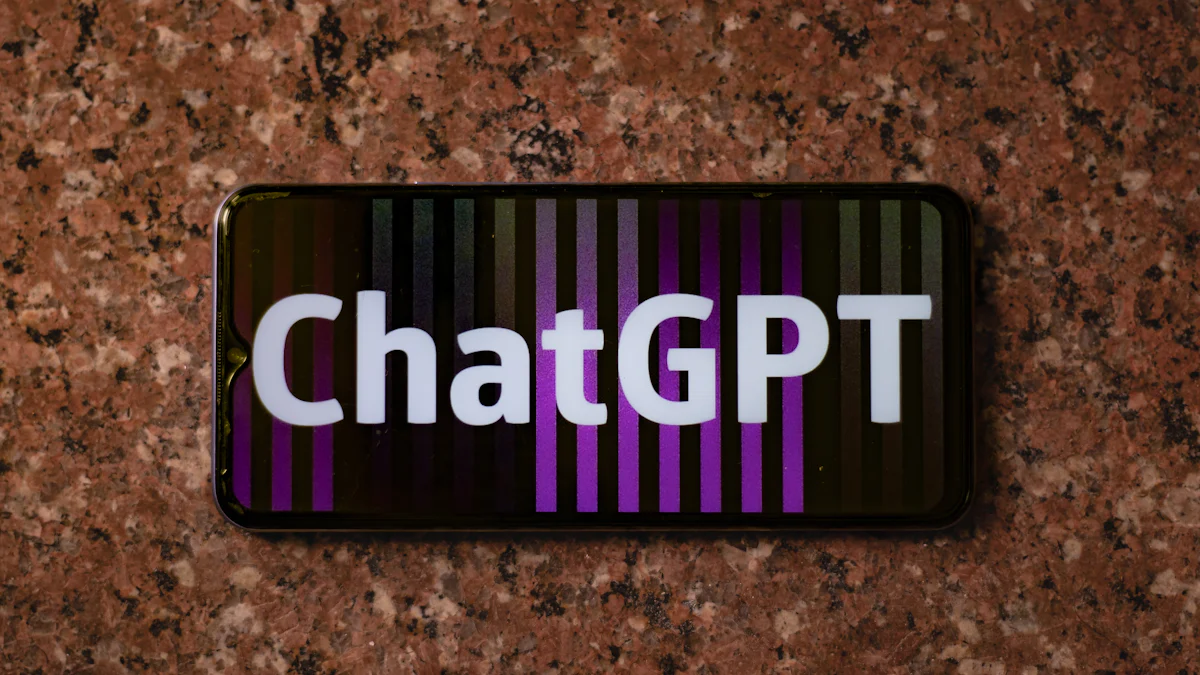ChatGPT Versus the Rest A Novel Writing Tool Showdown

Artificial intelligence transforms creative writing. Writers embrace new tools that spark imagination and streamline processes. Using ChatGPT to write a novel offers exciting possibilities for authors looking to enhance their storytelling. Personal experiences reveal the thrill of blending traditional methods with innovative technology. Many authors now explore AI-assisted writing, with 23 percent incorporating generative AI into their routines, including the role of an AI Blog Writer. This shift raises questions about creativity and originality. The balance between human touch and machine efficiency creates a fascinating landscape for storytelling.
Overview of Novel Writing Tools
Traditional Writing Tools
Pen and Paper
Writers often cherish the classic experience of pen and paper. The tactile sensation of ink flowing onto the page sparks creativity. Ideas come alive in a way that feels personal and intimate. Many authors find that writing by hand fosters a deeper connection to their stories. Each stroke of the pen carries emotion and intention. This method encourages reflection and allows thoughts to flow freely without the distractions of technology.
Word Processors
Word processors revolutionized writing for many. These digital tools provide convenience and efficiency. Writers can easily edit, format, and organize their work. Features like spell check and grammar suggestions enhance the writing process. Collaboration becomes simpler with cloud-based options. Sharing drafts with peers or editors takes just a few clicks. Writers appreciate the ability to save multiple versions of their work. This flexibility allows for experimentation without fear of losing original ideas.
AI-Powered Writing Tools
Introduction to AI in Writing
AI in writing opens new doors for creativity. These tools assist writers in generating content and refining ideas. The technology analyzes patterns and suggests improvements. Writers can harness AI's capabilities to enhance their storytelling. The integration of AI into writing processes has grown significantly. Many authors now rely on these tools to overcome writer's block and spark inspiration.
Popular AI Tools Overview
Several AI tools stand out in the writing landscape. Claude AI assists users in crafting full-length content. This tool allows writers to direct the AI paragraph by paragraph. Users maintain their unique voice and ideas throughout the process. Other popular options include Sudowrite, which focuses on fiction writing. Sudowrite offers features tailored for creative storytelling. Writers can explore various AI tools to find the best fit for their needs.
Many authors also utilize an AI Blog Writer to streamline content creation. These tools help generate engaging blog posts quickly. Writers can focus on their core message while AI handles the structure and flow. Experimenting with different tools can lead to exciting discoveries in the writing journey. Additionally, DeepL Write is a perfect tool to ease writing errors and free your creativity, serving as an AI-powered writing companion.
ChatGPT: Features and Capabilities
Explore the diverse capabilities of ChatGPT, including language translation, writing assistance, code generation, and more. Learn how ChatGPT excels in providing detailed explanations and answering questions. For a comprehensive showcase of its capabilities, check out ChatGPT Examples: A Comprehensive Showcase of Capabilities.
Conversational Abilities
Natural Language Processing
ChatGPT excels in natural language processing. This feature allows the tool to understand and generate human-like text. Writers can engage in dialogue with ChatGPT as if conversing with a friend. The responses feel fluid and coherent, making interactions enjoyable. Users appreciate how the AI grasps nuances in language. This capability enhances the writing experience significantly.
Contextual Understanding
Contextual understanding sets ChatGPT apart from many other tools. The AI analyzes previous exchanges to maintain relevance in conversations. Writers can build on ideas without repeating themselves. This feature fosters creativity and keeps the flow of writing intact. Writers often find that ChatGPT remembers details from earlier discussions. Such memory creates a more personalized interaction, making the writing process smoother.
Creative Writing Support
Story Generation
Story generation represents one of ChatGPT's standout features. The AI can produce unique story ideas based on simple prompts. Writers provide a few keywords or themes, and ChatGPT crafts engaging narratives. This process sparks inspiration and helps overcome writer's block. However, stories generated solely by AI may lack the diversity found in human-created tales. Writers should use AI-generated prompts as starting points rather than final products.
Character Development
Character development becomes easier with ChatGPT's assistance. Writers can describe characters and ask the AI for suggestions on traits, backgrounds, and motivations. This collaborative effort enriches character arcs and adds depth to narratives. Writers often discover new angles and perspectives through this interaction. While ChatGPT provides valuable insights, the final touch remains in the hands of the author. Balancing AI support with personal creativity leads to compelling characters.
Using ChatGPT to Write a Novel
Benefits of Using ChatGPT
Enhanced Creativity
Using ChatGPT to write a novel opens doors to fresh ideas. Writers can explore unique concepts that spark imagination. The AI generates prompts that inspire creativity. Writers often find themselves thinking outside the box. Engaging with ChatGPT can lead to unexpected plot twists and character developments. This tool acts as a creative partner, pushing boundaries and encouraging exploration. Many authors report feeling more inspired after interacting with the AI.
Streamlined Writing Process
ChatGPT simplifies the writing process. Writers can quickly generate text, making drafting easier. The AI helps organize thoughts and structure narratives. This efficiency allows authors to focus on storytelling rather than getting bogged down in details. Writers can also use ChatGPT for brainstorming sessions. The tool provides instant feedback and suggestions, enhancing productivity. Overall, using ChatGPT can transform the writing journey into a smoother experience. For more tips on effectively communicating with ChatGPT, check out Master ChatGPT for Effective Communication.
Limitations of Using ChatGPT
Dependence on Prompts
Writers must provide clear prompts for ChatGPT to function effectively. The AI relies heavily on input to generate relevant content. Without specific guidance, the output may not align with the writer's vision. This dependence can frustrate some users. Crafting effective prompts requires practice and skill. Writers may need to experiment to achieve desired results.
Potential for Generic Output
ChatGPT sometimes produces generic responses. While the AI generates coherent text, it may lack uniqueness. Writers might notice similarities between AI-generated content and existing works. This issue raises concerns about originality. Authors should view AI-generated text as a starting point rather than a final product. Balancing AI assistance with personal creativity remains essential. Writers can enhance their work by infusing their voice and style into the narrative. For more insights on how ChatGPT works and its impact on communication, check out Mastering ChatGPT: How Does Chat GPT Work Explained.
Comparison with Other Tools
Tool A: Features and Limitations
Strengths
Tool A shines in its ability to generate content quickly. Writers appreciate the speed at which this tool produces drafts. The interface remains user-friendly, making navigation simple. Many writers enjoy the variety of templates available for different genres. This flexibility allows authors to find a suitable format for their stories.
Weaknesses
Tool A struggles with emotional depth. The generated text often lacks a genuine human voice. Readers may find the writing feels flat and disconnected. This limitation can hinder engagement with the audience. Writers should consider supplementing Tool A's output with personal touches to enhance emotional resonance.
Tool B: Features and Limitations
Strengths
Tool B excels at character development. Writers benefit from its detailed suggestions for character traits and backgrounds. The tool encourages creativity by prompting users with unique ideas. Authors often find inspiration through its innovative features. This capability helps writers craft memorable characters that resonate with readers.
Weaknesses
Tool B has a steep learning curve. New users may feel overwhelmed by the extensive options available. Mastering all features takes time and practice. Additionally, the tool sometimes generates repetitive content. Writers might notice similarities between different outputs, which can stifle originality. Balancing the use of Tool B with personal creativity remains crucial.
Tool C: Features and Limitations
Strengths
Tool C offers robust editing capabilities. Writers can refine their drafts with ease. The tool provides helpful feedback on grammar and style. Many authors appreciate the real-time suggestions that improve clarity. This feature enhances the overall quality of the writing process.
Weaknesses
Tool C often lacks the creative spark found in other tools. While editing remains strong, generating original ideas proves challenging. Writers may find themselves stuck when seeking inspiration. The reliance on editing can overshadow the creative aspect of writing. Authors should use Tool C primarily as a supplementary tool rather than a primary source of inspiration.
User Experiences and Testimonials
Writers' Feedback on ChatGPT
Positive Experiences
Many writers enjoy using ChatGPT. This tool sparks creativity and helps generate fresh ideas. Users appreciate the conversational style. Engaging with ChatGPT feels like brainstorming with a friend. Writers often report that the AI provides unique story prompts. These prompts inspire new directions for narratives. Some authors find that ChatGPT helps overcome writer's block. The instant feedback encourages exploration of different plotlines. Writers also mention how easy it is to collaborate with ChatGPT. The AI adapts to individual writing styles, making interactions feel personalized.
Areas for Improvement
Some writers express concerns about the limitations of ChatGPT. Dependence on prompts can frustrate users. Clear instructions become essential for optimal output. Writers sometimes notice that the generated content lacks depth. Originality issues arise when relying solely on AI-generated text. Many authors suggest balancing AI assistance with personal creativity. This balance ensures a unique voice remains present in the writing. Improvements in contextual understanding could enhance the overall experience. Writers hope for more nuanced responses in future updates.
Writers' Feedback on Other Tools
Positive Experiences
Writers share positive experiences with various tools. Many enjoy the speed of Tool A. Quick content generation allows authors to focus on refining ideas. Tool B receives praise for its character development features. Users find the suggestions helpful for crafting relatable characters. Writers appreciate the editing capabilities of Tool C. Real-time feedback enhances clarity and improves drafts. Each tool offers unique strengths that cater to different writing needs. Authors often recommend experimenting with multiple options to discover what works best.
Areas for Improvement
Feedback on other tools highlights areas needing improvement. Tool A struggles with emotional depth. Writers find the output lacks a genuine connection. Tool B presents a steep learning curve. New users often feel overwhelmed by the extensive features. Repetitive content becomes a concern for some authors. Tool C, while strong in editing, falls short in generating original ideas. Writers want tools that inspire creativity rather than stifle it. Overall, users seek enhancements that foster a more engaging writing experience.
The comparison reveals valuable insights about writing tools. ChatGPT excels in generating ideas and enhancing creativity. Many writers find that using ChatGPT to write a novel sparks fresh concepts. Other tools offer unique strengths, such as character development or editing support. Each tool serves different needs. Writers should explore various options to discover what resonates best. Experimentation leads to growth and inspiration. Embrace the journey of creative writing with an open mind.
See Also
Writesonic AI And QuickCreator: Content Creation Showdown
Top 5 AI Tools Competing With Scalenut For Content
Mastering Content Creation: Quick Creator's Updated Guide

